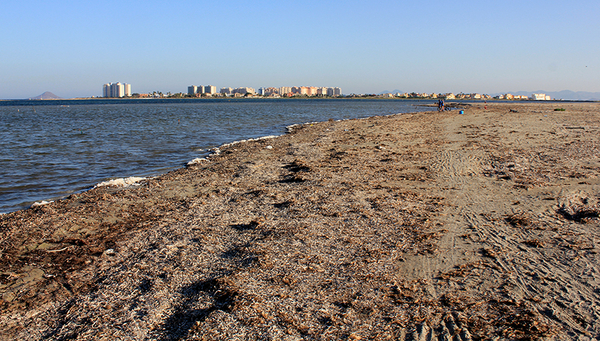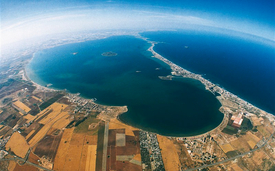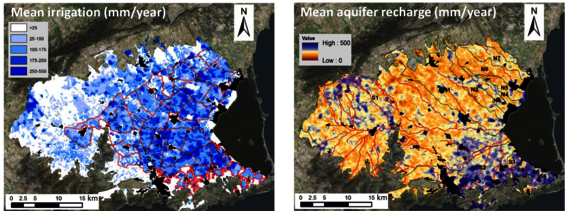News Detail
Tainted idyll: groundwater over-fertilising lagoon in Spain
August 6, 2018 |
Tomatoes, cucumbers, peppers … many of the vegetables in our supermarkets come from Spain, and in particular from the province of Murcia. The area surrounding the “Mar Menor” lagoon is also heavily used for agricultural production. The Tajo Segura canal has been channelling fresh water down from the north of Spain since 1979 to irrigate the region’s farmland, although groundwater is used to supplement the canal water in times of drought. At the same time, the uppermost layer of groundwater supplies the Mar Menor lagoon, which leads to large amounts of pollutants from the intensively-farmed land ending up in the lagoon – and with the lagoon’s cosy, warm water temperatures, over-fertilisation and algal blooms are the result. In such pea-soup-like waters, bathing is impossible.
How does the groundwater feed affect the water quality in the lagoon? To what extent can the groundwater be used without negative consequences? The organisation of irrigators in the region commissioned the research into the underground water flows to enable them to find answers to these questions.
Experts in hydrology, geography, geoinformation and environmental protection, and among them Joaquín Jiménez-Martínez from Eawag, worked with data from 2000 to 2016 to develop a hydrogeological model. The model quantifies how much water ends up in the groundwater – and from there in the Mar Menor – under a variety of weather conditions, through precipitation and irrigation. This information, together with the chemical analyses of the groundwater, allowed the researchers to calculate the nutrient loads.
The researchers intend to use the hydrogeological model in a second stage of their investigations, to estimate how new drainage systems, additional groundwater usage or climate change might affect groundwater flows into the Mar Menor. The aim is to optimise water management in the region so as to protect the unique lagoon from over-fertilisation. Whether it is not already too late for that remains to be seen.
The “Mar Menor” in the Spanish province of Murcia is Europe’s largest salty inland water body.
Photo: Ayuntamiento Cartagena



